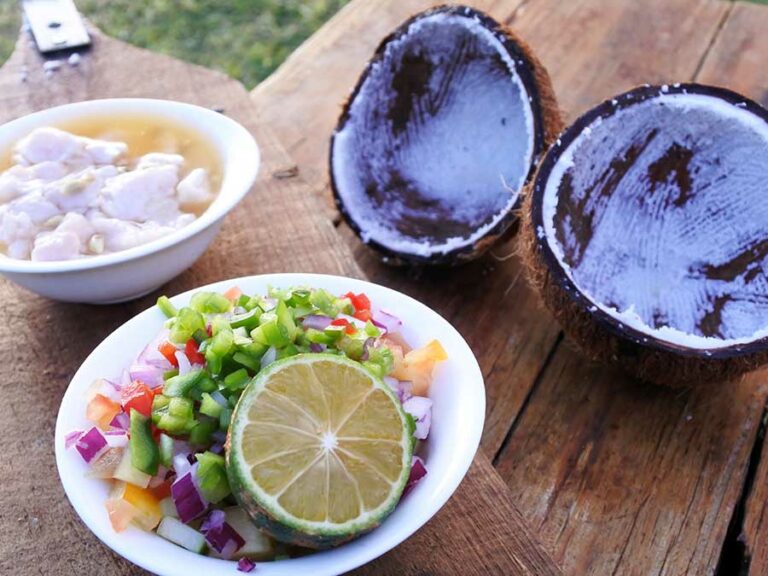Introduction: The Cuisine of Fiji
Fijian cuisine is a fusion of indigenous, Indian, Chinese, and European influences, reflecting the country’s complex history and multicultural society. The traditional diet is based on locally sourced ingredients, including root vegetables, fish, coconut, leafy greens, and spices. Fijian meals are typically prepared using simple techniques, such as boiling, grilling, and steaming, and served with rice or cassava.
Staple Ingredients in Fijian Meals
Fijian cuisine relies heavily on a few staple ingredients that form the foundation of many dishes. These include root vegetables, fish, coconut, leafy greens, and spices. These ingredients are not only abundant in Fiji but also provide essential nutrients and flavors that define Fijian cuisine.
Root Vegetables: The Foundation of Fijian Cuisine
Root vegetables such as taro, cassava, yam, and sweet potato are essential in Fijian cuisine and are used to make various dishes. Taro, for instance, is a starchy root vegetable that is boiled, mashed, and served with meat or fish. Cassava, on the other hand, is used to make cassava pudding and cassava chips, while yam is used to make yam soup and yam chips. Sweet potato is roasted or boiled and served as a side dish or in stews.
Fish: The Protein of Choice in Fijian Cuisine
Fijian cuisine is known for its seafood and fish dishes, which are an essential source of protein in the Fijian diet. Fish is typically grilled, fried, or boiled and served with root vegetables or coconut milk. Some of the most common fish species used in Fijian cuisine include tuna, mahi-mahi, barracuda, and tilapia. Fish is also used to make kokoda, a popular Fijian dish made from raw fish marinated in lemon juice and coconut milk.
Coconut: The Versatile Ingredient in Fijian Cuisine
Coconut is a versatile ingredient that is used in various forms in Fijian cuisine. Coconut milk is used to make curries and stews, while grated coconut is used to make desserts and as a topping for dishes. Coconut oil is also used for cooking and frying. In addition, the leaves of the coconut tree are used to wrap food and make baskets.
Leafy Greens: Important Nutrient Sources in Fijian Cuisine
Leafy greens such as spinach, taro leaves, and watercress are an important source of nutrients in the Fijian diet. These greens are used to make stews, soups, and salads and are often served with fish or meat. Taro leaves are also used to wrap meat and fish before cooking.
Spices and Herbs: Flavors of Fijian Cuisine
Spices and herbs such as ginger, garlic, turmeric, and curry powder are used to flavor Fijian dishes. These ingredients are often combined with coconut milk to make curries and stews and are used to marinate meat and fish. Other herbs, such as lemongrass and pandanus leaves, are used to add flavor to dishes.
Rice: A Common Addition to Fijian Meals
Rice is a common addition to Fijian meals and is often served with curries and stews. Rice is boiled and served plain or flavored with coconut milk, spices, and herbs. In addition, rice flour is used to make various desserts, such as rice pudding and rice cakes.
Conclusion: Diversity and Nutrient-Richness of Fijian Cuisine
Fijian cuisine is diverse and nutrient-rich, reflecting the country’s natural resources and multicultural heritage. The staple ingredients of root vegetables, fish, coconut, leafy greens, spices, and rice provide essential nutrients and flavors that define Fijian cuisine. Whether you try kokoda, taro chips, or cassava pudding, you’ll get a taste of Fiji’s unique cuisine and culture.

